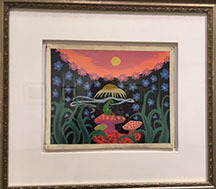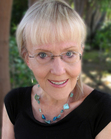I’ll Have Mushrooms with That
Cannabis led the way. Mushrooms
could be next. Colorado is again in the vanguard, this time pushing for a local
ballot measure in Denver to “free the fungi” – meaning, of course, psychedelic
‘shrooms. The advocates are making a cognitive freedom argument (one’s right to
self-experiment if not harming others).
Apart from legalities (like
finding yourself with a felony conviction for possession), mushrooms can be
grown at home or produced commercially, eaten fresh (“wet”) or dried for
storage, with the latter bringing down harsher penalties because dried ‘shrooms
are less like produce and more like product. The Colorado movement aims to
start by downsizing possession from a felony to a misdemeanor.

Moving from basement or backyard
to lab, the psychoactive ingredient in ‘shrooms is psilocybin. Illegal for any
use for decades, this changed in the past 20 years because psilocybin has
become acceptable in university medical research. Studies are looking at
applications for afflictions ranging from depression and addiction to anxiety
in the last stage of cancer.
Psilocybin is found in many
species of mushrooms, though not all mushrooms have psychedelic properties –
just as not all are edible, and many are lethal. Some are deadly plus
psychedelic, in which case dosage becomes a matter of tripping in life vs.
tripping off to eternity.

The usual ‘shrooms are brownish
and skinny. A variant is the perky looking red and white-dotted fly agaric
(amanita muscaria), shown here Mary Blair’s 1951 preliminary design for Disney’s
Alice in Wonderland. (The original “Caterpillar Sitting on a Mushroom,” in
gouache on board, is in the Hilbert Collection, and it recently caught my eye when
it was on display at the Hilbert Museum. )
Well, back to the magic in
magic mushrooms. Psilocybin has a research history dating to the middle of the
last century, around the time of Aldous Huxley’s breakthrough book, The Doors
of Perception.
Huxley famously experimented
with mescaline, LSD, Morning Glory seeds, etc., and later on with psilocybin.
The first three were home-style experiments, but was introduced to psilocybin
in the early 1960s when he briefly participated in a study conducted by
then-Harvard professor Timothy Leary.
As far as the experience
itself, those who have experimented with psychedelic mushrooms often report a
spiritual sense of wonder, a realization of oneness with the universe. Huxley’s
experiments were a quest to induce a mystical experience, which he describes this
way:
“In the final stage of egolessness there is an “obscure
knowledge” that All is in all—that All is actually each. This is as near, I
take it, as a finite mind can ever come to “perceiving everything that is
happening everywhere in the universe.” –Aldous Huxley, The Doors
of Perception
That was Aldous writing in 1953
(the book was published in 1954). Many books have been written about both
Huxley and psychedelics since then, including my own book, Aldous Huxley’s
Hands: His Quest for Perception and the Origin and Return of Psychedelic
Science.
Now, two new books on
psychedelics are forthcoming in May. One is Trip: Psychedelics, Alienation, and
Change by Tao Lin. The other is Michael Pollan’s How to Change Your Mind: What
the New Science of Psychedelics Teaches Us About Consciousness, Dying,
Addiction, Depression, and Transcendence. I hope to take a look at these two and
write about them in a future blog.
Meanwhile, here is an afterthought.
When a plant with psychoactive properties grows naturally, whether a weed or a
fungus springing from the soil, isn’t fungus already free? Can nature truly be
contained?



